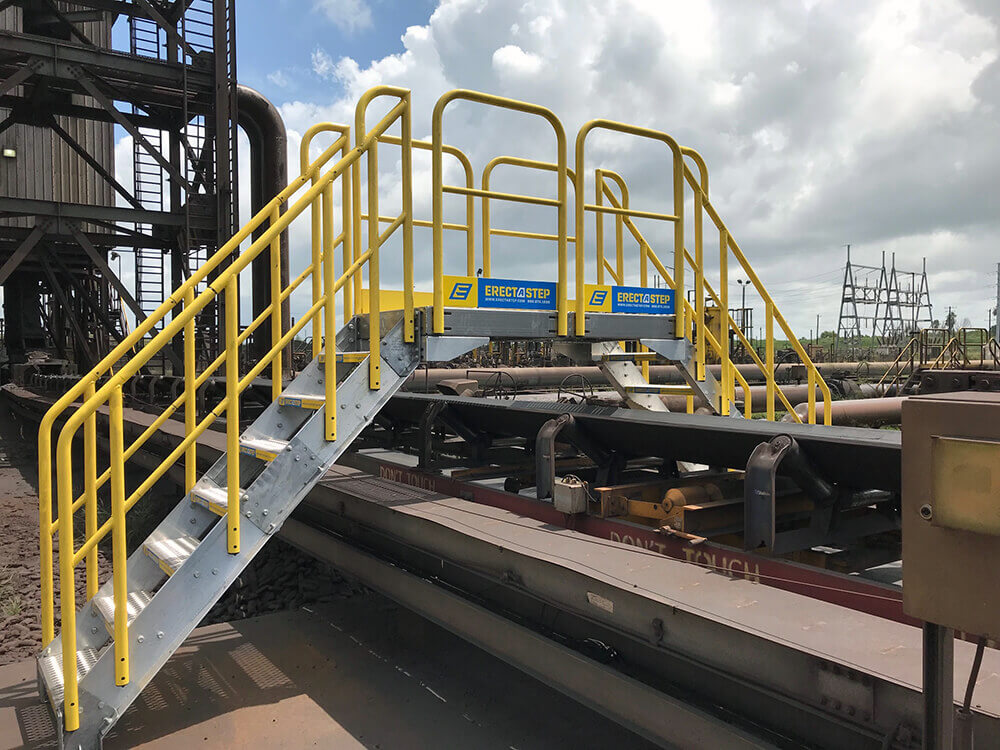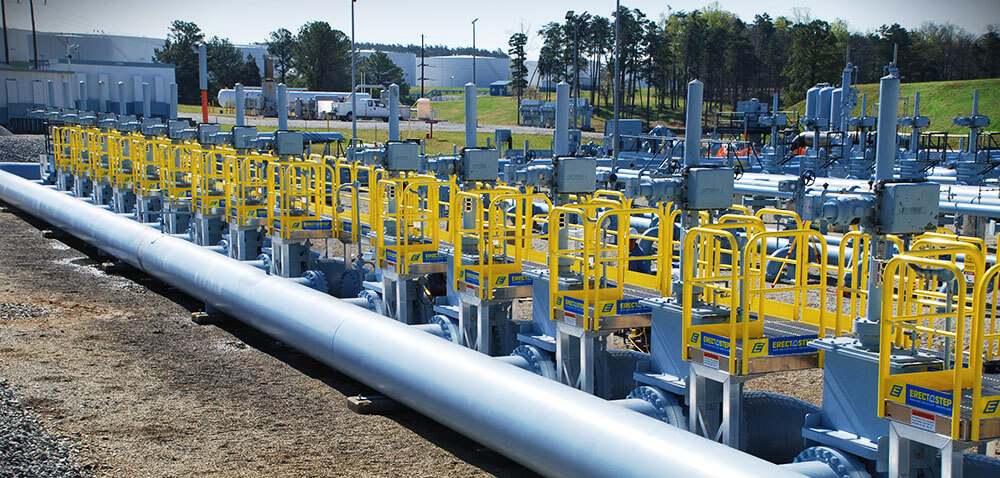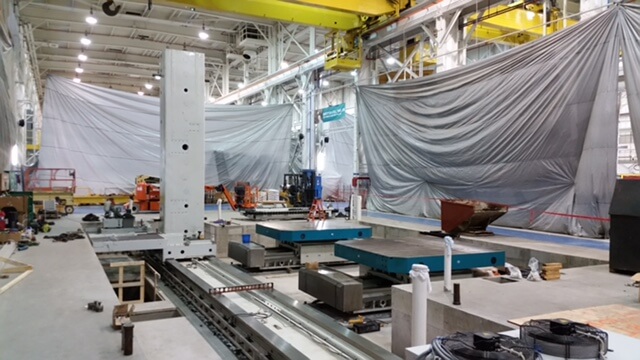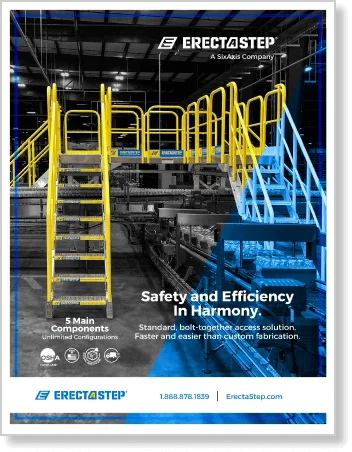Replacing Wood Stair with ErectaStep Metal Access Stair
Categories: Industrial Stairs Commercial Commercial Low-Height Platforms Maintenance Platforms
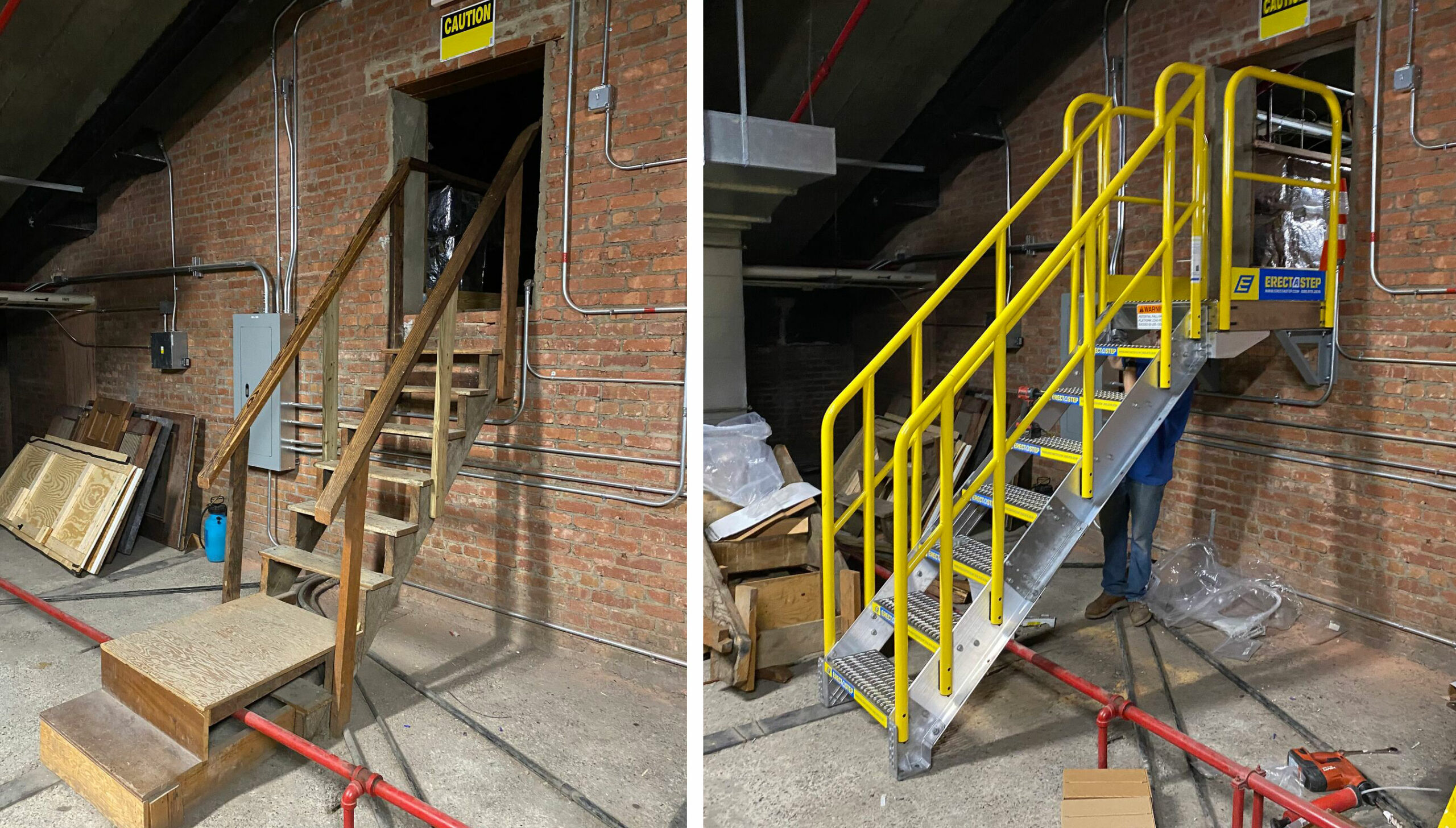
ErectaStep Metal Access Stair before & after
Daily wear and tear are only the tip of the iceberg that can render old wooden stairs to deteriorate so quickly in commercial buildings across America. The steps may become splintered or cracked, railings may loosen, and not to mention, the challenges with water and pests in your building make it even harder to bargain with more issues that come into play when the need to replace the cheap, temporary wood stairs arise.
Termites feed on wood, and their tunnels can weaken the structure of stairs, making them more likely to collapse. Water can also cause wood to rot, making it necessary to replace stairs where moisture chews it beyond recognition over time. Moisture-soaked wood is also a breeding ground for bacteria and fungi, which causes rot and not only turns your staircase into worthless junk but also becomes a horrible haven for diseases to thrive in your workplace.
Inspecting wood stairs regularly for signs of termites or water damage is important in any building, especially when working in an industrial facility. You never know what might happen! As a result, wooden stairs can become unsafe, posing a risk of injury to anyone who uses them.
Wood is the material of choice if you need stairs installed quickly and on a budget. However, wood stairs are not as durable as metal stairs and are not ideal for industrial settings. Over time, wood stairs can become worn, slippery, and pose a safety hazard. Metal stairs are a wiser choice for industrial facilities as they are more durable and slip-resistant. In addition, metal stairs can be easily cleaned and require little maintenance. Metal stairs are the way to go if you are looking for a long-term solution.
Replacing wooden stairs with a durable set is the best way to ensure they are safe and functional.
While wooden stairs require regular maintenance, they may last for years with proper care. With everyday use, wood will, however, eventually need replacement. When that time comes, choosing a high-quality product that will provide years of service will pay off your initial investment.
In the before and after photos above, old wood stairs look rickety to keep with that narrow upper-level entrance. When it comes to the frail-looking structure, they just don't cut it anymore, and they're too unstable and flimsy to meet OSHA stair guidelines. So, think again if you're considering using that unsteady frame to get to that upper level. The worker even needs to squat to pass through that small opening in the wall, possibly putting more stress on the topmost platform!
Among other things, the guardrails are so skinny that they can barely support a normal person's weight. If you leaned on them, you'd probably fall right through. There are even no midrails or other stair parts to provide secondary reinforcement!
One important consideration when installing aluminum stairs is stability. Unlike traditional wooden stairs, aluminum stairs are not stuck to the wall with just nails or screws. Instead, they rely on a series of bolts and brackets for better support. Consequently, it is crucial to ensure that the bolts are properly tightened before using the stairs. Failure to do so could result in the stairs becoming loose and unstable, posing a serious safety hazard. By taking the time to install aluminum stairs properly, you can help ensure that they will remain safe and secure for years to come. Here are other related access stair projects that you can check out: tank access platform project and air duct work platform project.
Metal stairs are a great choice for commercial and industrial settings because they're easy on the eyes and meet OSHA standards. Stairs made of aluminum are much more effective protection against pesky termites than wooden ones, so you'll never have to worry about them devouring away other parts of the building!
https://www.erectastep.com/accessories/
https://www.erectastep.com/commercial-stairs/

